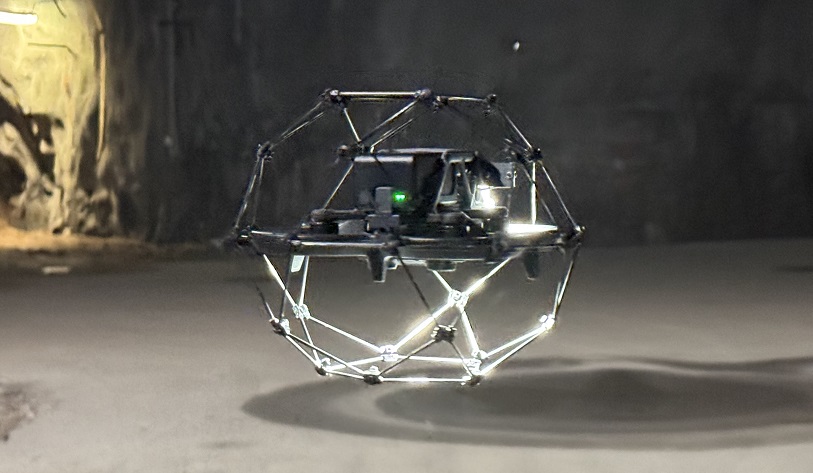Drones streamline inspections and patrols at SFR
At the Final Repository for Short-Lived Radioactive Waste, SFR, in Forsmark, the maintenance team has invested in a drone to improve the work environment and streamline their work. The investment has already paid for itself during the first few months of the year through more efficient inspections and patrols of the facility.
SFR is part of SKB’s final repository system and has been in operation since the late 1980s. The facility is used to store short-lived operational waste from the Swedish nuclear power plants, as well as radioactive waste from the healthcare sector, industry and research.
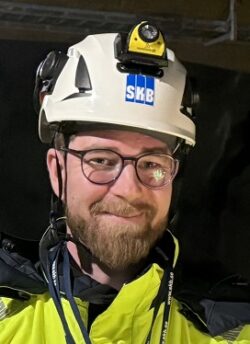
David Kraft, head of maintenance team at SFR.
David Kraft is head of the maintenance team at SFR and sees several advantages in using drones to carry out patrols and inspections. These involve going down into the facility and checking that everything is complying with the existing procedures and processes.
– We realised that a drone could make our work easier. There’s a lot to be checked visually at the facility, and some things are in places that are difficult to access. Using the drone is an easy way to get an overview, as it quickly reaches the correct height and we don’t have to erect scaffolding. Fewer assignments at height means a better work environment. It also saves time and money.
Inspiration came from the neighbours at FKA, the Forsmark nuclear power plant. They have long been using drones to inspect the inside of their facility, and this has enabled them to reduce the amount of radiation to which staff are exposed. Once Vattenfall Research and Development in Älvkarleby had presented their new technology, the equipment was purchased. Two of SFR’s coworkers, Roger Sjölander and Christopher Andersson, already knew about drones, which meant that the technology could be deployed without any delay.
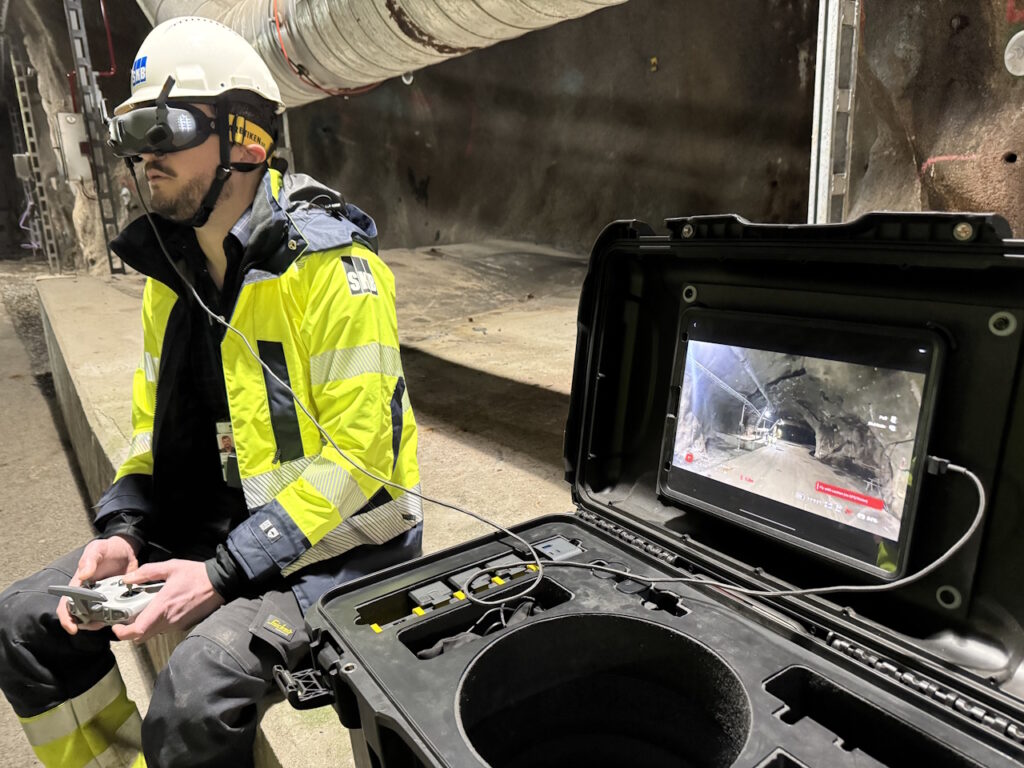
Roger Sjölander uses VR glasses to manoeuvre the drone, and to see what it is seeing,
Collaboration for safe flights
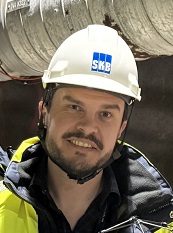
Roger Sjölander.
Roger Sjölander describes the process, which is based on close collaboration between the drone pilot and an assistant who makes sure that the situation is safe:
– The pilot uses VR glasses to manoeuvre the drone, and to see what it is seeing, says Roger.
– The same image is displayed on an iPad so that more people can follow it in real time. The pilot is assisted by a co-pilot, who keeps an eye on the drone’s parameters and also monitors the flight itself, and makes sure that nobody gets too close. As the drone is relatively small, it can be flown in extremely small spaces where it’s not normally possible to conduct inspections.
A patrol that might previously have taken a whole day can now be completed in one hour.
Extensive areas of application
The maintenance team is still getting used to working with the drone, and they are constantly finding new areas of application. Using the drone for an initial check, for example, provides better conditions for the person who will be performing a job. Even during this interview, when the technology was being demonstrated, a small hole was discovered in a ventilation pipe.
As the drone is relatively small, it can be flown in extremely small spaces where it’s not normally possible to conduct inspections.
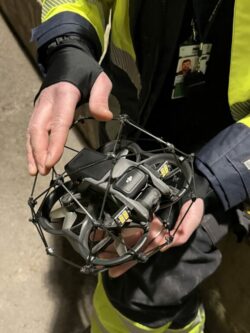
Since the drone is relatively small, it can be flown in very confined spaces where inspections normally cannot be carried out.
– Using the drone, it was easy to see and the hole was clearly visible on the screen,” says Roger. “As we’d never have seen the hole without using a drone or scaffolding, being able to identify it in time was a major benefit. Repairing the hole will put the ventilation in better condition to do what as it was designed for.”
David and Roger have a keen interest in using new, modern methods in their work. But it should be remembered that while the drone can supplement and in some cases replace vision, it cannot do the same for hearing, smell and feeling. So even though the drone makes the work of those who usually perform inspections much easier, it does not replace them.
– We’re constantly seeing new areas of application and learning more every week. You never know, one day we might see autonomous drones that can take care of inspection patrols of the facility automatically. That may be some time far in the future, but it’s an exciting idea, one that shows the potential of this technology, conclude David and Roger.
Published: 17 June 2025
News
-
SKB signs new agreement with South Korean repository organisation
Swedish Nuclear Fuel and Waste Management Company, SKB, through its subsidiary SKB International, has signed a new Memorandum of Understanding with its counterpart in South Korea, Korea Radioactive Waste Agency (KORAD). The agreement, which is an information exchange agreement, strengthens the relat…Published: 18 November 2025
-
SKB presents new research programme
SKB has submitted its eighteenth research programme to the Swedish Radiation Safety Authority. The report provides a comprehensive overview of progress made and outlines SKB’s future research direction. Every three years, SKB presents a Research, Development and Demonstration programme for the manag…Published: 6 October 2025
-
SKB signs collaboration agreement for the Spent Fuel Repository
SKB has signed a collaboration agreement with Implenia for the construction of the Spent Fuel Repository’s hard rock facility in Forsmark. The assignment includes access routes down to a repository level of 500 metres and the first parts of the final repository.Published: 18 June 2025
-
Blasting starts on the SFR extension in Forsmark
Work to extend SFR, the final repository for short-lived radioactive waste, began today with a blast 45 metres below ground. The blast marked the start of the six-year extension project.Published: 23 January 2025
-
Construction begins on Swedish Spent Fuel Repository
The ground was broken today to start the construction of the Swedish Spent Fuel Repository in Forsmark, Östhammar Municipality. Minister for Climate and Environment Romina Pourmokhtari was present to officially start the work.Published: 15 January 2025
Published: 17 June 2025
